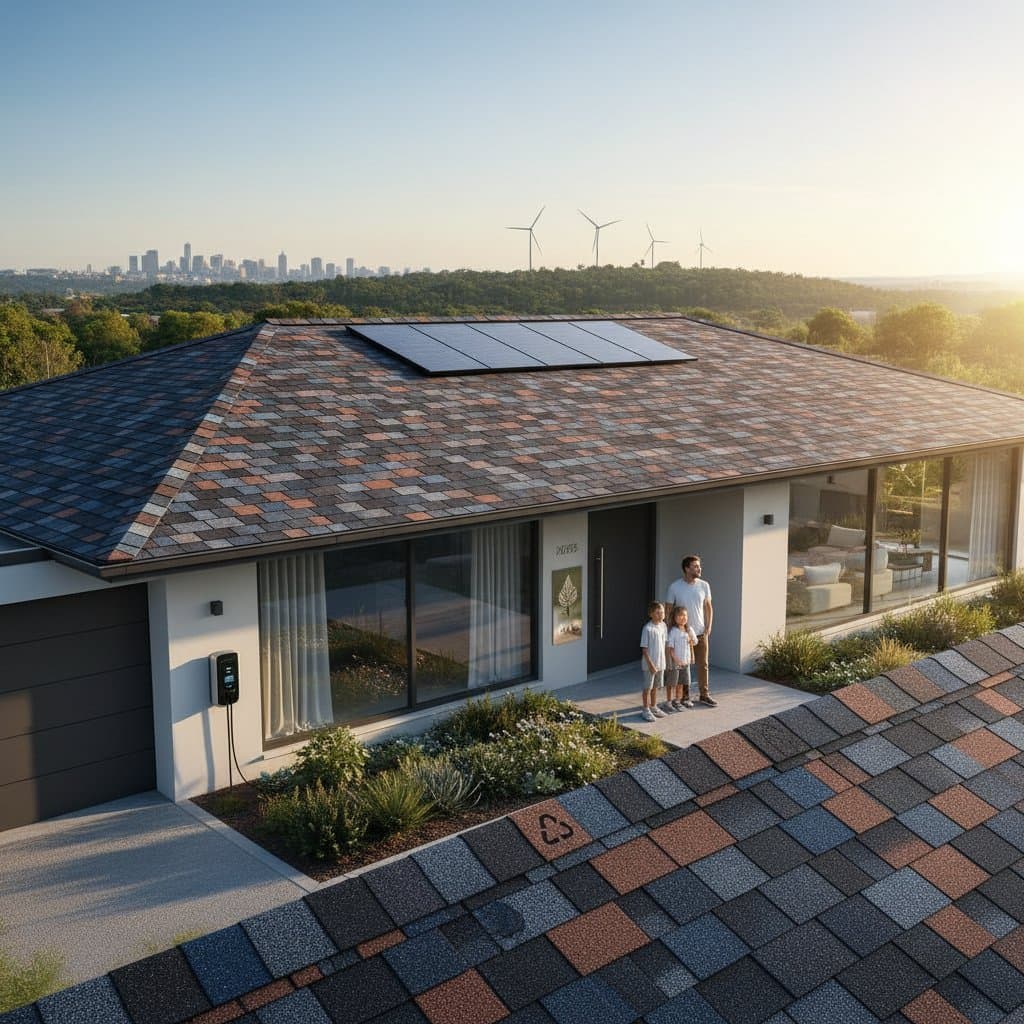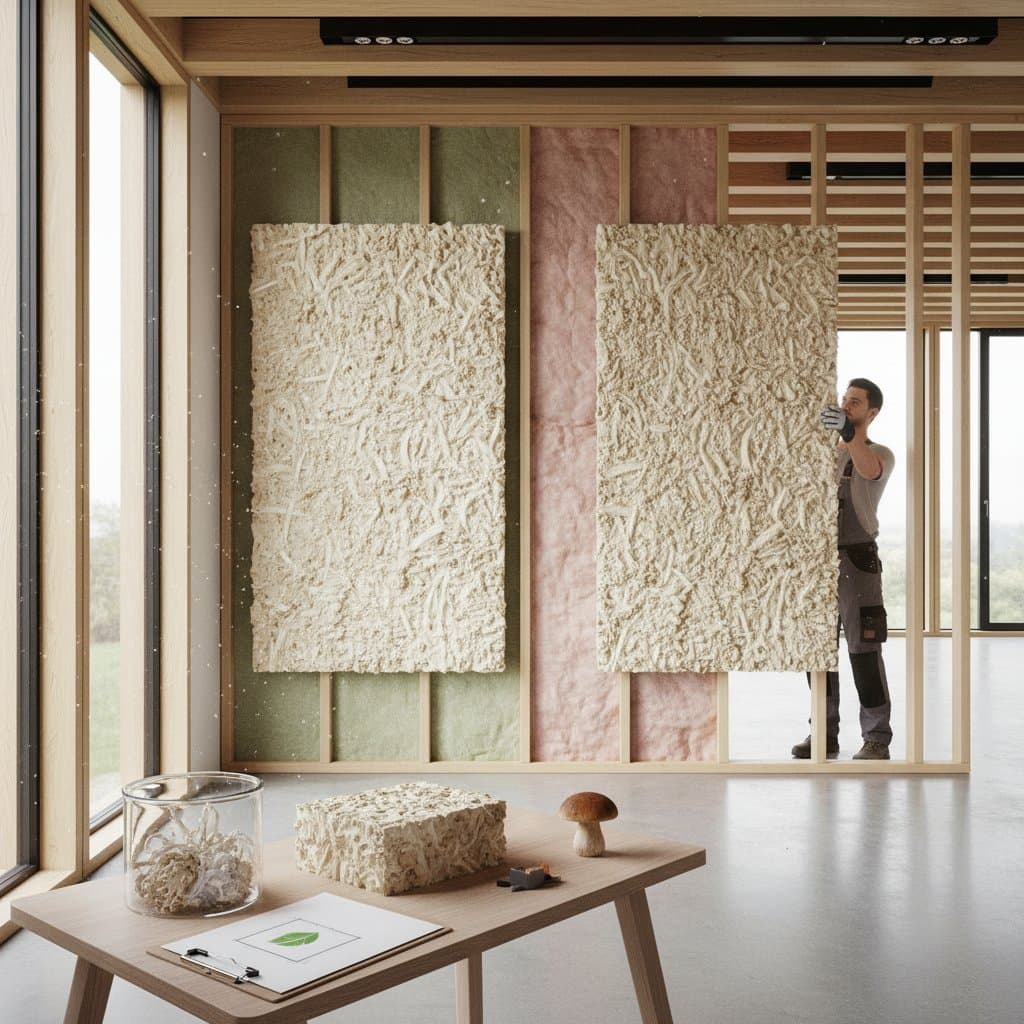Why Recycled Shingles Top 2025 Eco Trends
Picture this: you stand in your driveway, gazing up at a roof that gleams with subtle texture, strong enough to withstand a storm yet crafted from what once was discarded plastic and rubber. As a green building expert, I have watched this transformation unfold across neighborhoods where sustainability is not just a buzzword but a building standard. Recycled shingles are no longer experimental. They are redefining what eco-friendly roofing can achieve, matching performance with environmental responsibility.
If you are like many homeowners, rising material costs and growing awareness of waste reduction have you rethinking traditional asphalt or wood shingles. The opportunity lies in choosing a roofing material that keeps tons of discarded plastics out of landfills while giving your home a stylish, lasting shield against the elements. That is where recycled shingles shine.
The Sustainability Problem and The Roofing Opportunity
Conventional roofing materials contribute heavily to landfill accumulation. Asphalt shingles alone account for millions of tons of waste annually, and most are not recycled. In regions that experience temperature swings or high humidity, these shingles degrade faster, leading to frequent replacements. From my years in the field, I have seen countless homeowners frustrated by this cycle of waste and expense.
Recycled shingles provide a powerful counterpoint. They are manufactured from post-consumer plastics, reclaimed rubber, and even composite waste from industrial sources. By giving these materials a second life, you cut fossil fuel dependency and decrease embodied carbon, the total greenhouse gas emissions produced during manufacturing. Studies show that recycled shingles can reduce production emissions by up to 50 percent compared to virgin materials.
What Makes Recycled Shingles a Smart Investment
The appeal of recycled shingles lies in their strength, longevity, and aesthetic flexibility. They mimic slate, cedar, or clay styles yet cost significantly less to maintain. A recycled plastic roof typically lasts 40 to 50 years, outliving traditional asphalt by two or three decades.
As a green building expert, I recommend viewing your roof not only as protection but as a long-term environmental investment. A durable, energy-efficient roof means fewer replacements, lower resource use, and less waste.
Key Advantages Include:
- Exceptional Durability: Resistant to cracking, warping, and UV degradation.
- Energy Efficiency: Reflective coatings lower attic heat buildup and reduce cooling needs by up to 20 percent.
- Lightweight Design: Easier installation compared to heavy natural slate.
- Low Maintenance: No rot, mold, or insect vulnerability.
- Sustainability: Diverts thousands of pounds of waste from landfills for each roof installed.
Step-by-Step: How to Choose and Install Recycled Shingles
-
Evaluate Local Climate Conditions:
Match the shingle type to your environment. In humid coastal areas, choose composites with moisture-resistant additives. In colder climates, look for shingles with high R-value insulation backing to retain indoor heat. -
Compare Material Sources:
Ask manufacturers about the percentage of post-consumer content. The higher the recycled content, the more sustainable the product. -
Check Certification:
Seek materials that meet LEED or Green Globes standards. Certification ensures compliance with durability and environmental benchmarks. -
Hire Experienced Installers:
Installation quality determines lifespan. Work with certified green roofing contractors vetted through trusted platforms like our own expert network, where professionals meet strict sustainability criteria. -
Maintain with Seasonal Checks:
Inspect annually for debris buildup, especially after storms. Clean gutters and verify that sealants remain intact.
Expert Tips to Boost Your Home's Eco-Efficiency
Pair recycled shingles with cool roof coatings to reflect sunlight and reduce heat gain. Add rainwater harvesting systems to capture runoff for garden irrigation. Consider solar-ready roof panels that integrate seamlessly with recycled shingles for renewable energy generation. Improve attic insulation during installation to maximize thermal performance.
These combined strategies can cut household energy use by 25 percent or more while improving indoor comfort throughout the year.
Cost and Performance Insights
Many homeowners assume green roofing means higher costs, but recycled shingles often prove competitive. Material prices range from $5 to $9 per square foot installed, depending on region and style, while long-term energy savings and minimal maintenance offset initial expenses.
From my years in the field, I have seen homeowners recoup installation costs within a decade through reduced utility bills and avoided replacements. A recycled roof also boosts resale value since eco-conscious buyers increasingly prioritize sustainability.
According to builder and renewable material advocate Lisa Renner, “Recycled roofing has reached a turning point. Homeowners are realizing that sustainability and performance can coexist beautifully.” That insight underscores what many industry professionals already know: eco-friendly does not have to mean compromise.
How Communities Benefit from Recycled Roofing
Local recycling programs thrive when demand for post-consumer materials grows. Choosing recycled shingles supports regional waste management systems and green job creation. Each installation stimulates a loop of reuse, turning what once was trash into a valuable building resource.
Municipalities that promote green roofing incentives often see measurable reductions in landfill use and stormwater runoff. If your community offers rebates for sustainable construction, recycled shingles may qualify, saving you hundreds on permits or inspection fees.
Making It Happen
If you are planning a roof replacement this year, consider contacting a vetted green building expert through our platform for a personalized assessment. Ask questions about recycled material sourcing, insulation compatibility, and warranty coverage. A professional can help you compare brands, explore financing options, and ensure compliance with local building codes.
Recycled shingles represent the future of sustainable living. They embody the idea that every home improvement can echo larger environmental values. By choosing recycled materials, you protect your investment, enhance your home’s energy profile, and contribute to a cleaner planet. The roof over your head can become the foundation of your eco-legacy.
FAQs
Q: How long do recycled shingles typically last?
A: Most high-quality recycled shingles last 40 to 50 years, with minimal color fading or cracking. Proper installation and maintenance can extend their lifespan even further.









